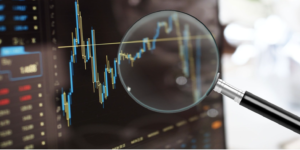The Last Look…
Posted by Colin Lambert. Last updated: March 26, 2024
This week’s column is full of opinion and thought-provoking observations, but it has a different author – I think Eva Szalay is going to fit in rather well…
Dear Readers,
It is an absolute pleasure to join The Full FX as a contributing editor at large. It is of course needless to say that Colin is a legend and anyone saying otherwise needs their head examined.
As my first official piece for the publication, I thought that a little lookback might be in order. When thinking about what to write, it struck me that it’s exactly 10 years since I started my gig as editor of FX Week, a publication that some of you may remember. In 2014, the burning issues of the day were the fixing scandal and the fallout from the worst reputational blow the currency industry suffered, possibly ever.
At the time, turnover according to the Bank for International Settlements stood at $5.3 trillion and the leader in the Euromoney FX survey was Citi, rising to the top for the first time since 2002. It was a turbulent time, particularly for those caught in the regulatory storm and subsequent investigations.
In May 2014, primary markets were still doing more volumes than others. EBS registered ADV of $73.5 billion while Reuters Matching did $87 billion on an average day that month.
Mifid II was also on the horizon, promising to formalise best execution requirements and making markets a more level playing field. Suddenly, we couldn’t move for panels discussing best execution and we’ve heard that best price is not best execution approximately a hundred million times since!
On the macro front central bank rate hikes were but a dream as volatility in markets went AWOL.
Why is this relevant today? Because I’m wondering how much has changed and whether we can find any winners or losers from these changes. Have outcomes actually improved for end clients? Has trading become more transparent, more efficient and (dare I say) cheaper? Do we have more information about price discovery and price formation? And have relationships between key players change as a result of regulatory forces and choices made by clients?
I’m curious to hear what you think. In my view, the answer is no.
There have been developments in market share, for sure. In 2013 Deutsche Bank was the largest dealer in FX with a 15.2% market share according to Euromoney’s annual survey. That share has fallen to 10.89% by 2022, when the German behemoth regained its top place in the rankings.
Overall, the market share controlled by the 10 largest players, according to Euromoney, has fallen to just shy of 66% in 2022 from 79% in 2013, a significant decline in the pie controlled by the biggest shops, which now include non-bank players such as XTX Markets and Jump Trading.
But these declines are not reflected in revenues. Citi has actually made more money from its fixed income business last year than in 2014, eking out a healthy $14.82 billion from its division in 2023 while it only managed $11.8 billion a decade ago. This is despite the bank slipping from first place to seventh in the benchmark rankings.
According to Boston Consulting Group, fixed income and currencies revenues amount to $101 billion a year across the investment banking industry, pretty much exactly the same overall amount as 10 years ago.
So, despite the drive for efficiencies from regulators, it seems that the overall wallet size hasn’t changed for the industry, only the distribution has altered somewhat as the non-bank players increased their footprint at the expense of smaller banks.
The cost of foreign exchange within asset managers is still zero, and yet somehow, it’s a $100 billion a year caper for the sell side. To be fair, global volumes have shot up to $7.5 trillion, so there is more business to go around in theory and the fact that the overall wallet hasn’t increased in parallel is a sign of declining profitability – perhaps.
Where trading happens has also shifted, perhaps reflecting the decline in market share by the top 10 wholesale players. The former primaries, EBS and Reuters, have become less dominant in the past decade and the questions over what the “price” is, are becoming louder.
Will futures lead spot prices? Maybe. Will credit and liquidity finally be separated after all these years of talk? Unlikely. Will the buy-side pay for FX? Not bloody likely!
And this, ultimately, is why not much has really changed. We might have reshuffled some of the business away from open venues to favour internalisation and there might be more direct and disclosed trading than before, but it’s hard to find evidence that the market has become more efficient and transparent.
As for the fixing, I refer you all to the monthly figures published by The Full FX about costs incurred at these recurring set pieces.
So here we are, as far as I can tell from my vantage point. But I’m looking forward to hearing your views, which you’re encouraged to send to eszalay@thefullfx.com. I’m also looking forward to hearing your ideas, thoughts and confidential tips on this address.
With that (and without mentioning T+1 once!), I’m looking forward to working with you all.
Eva Szalay

